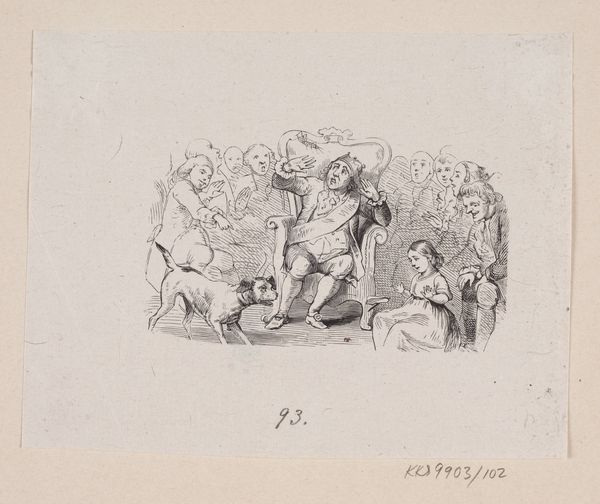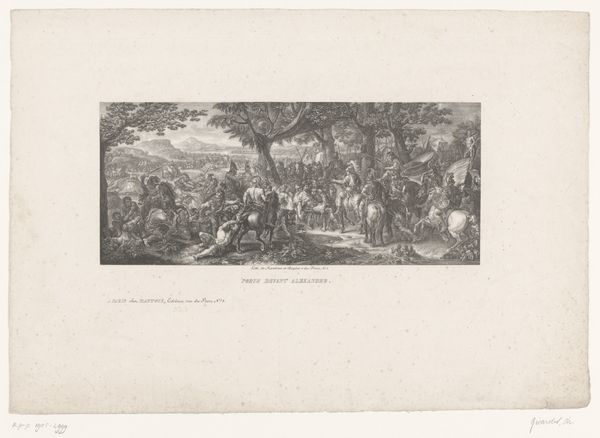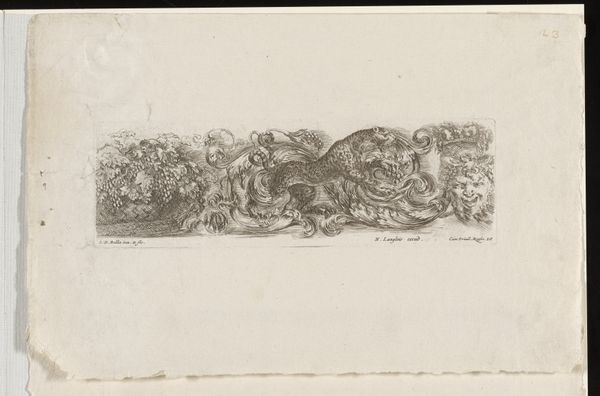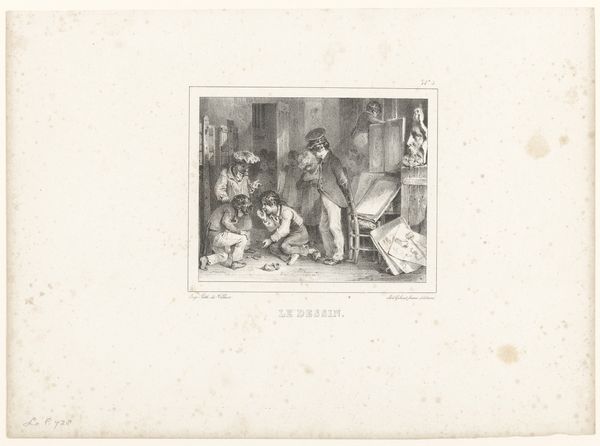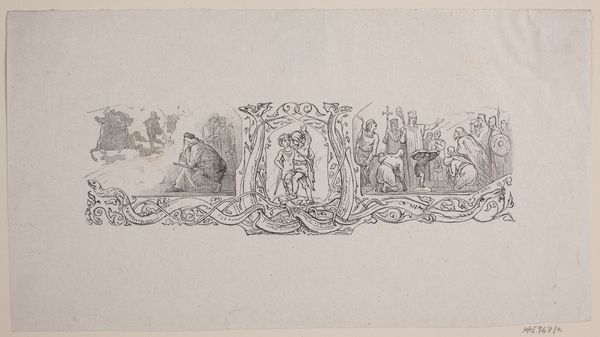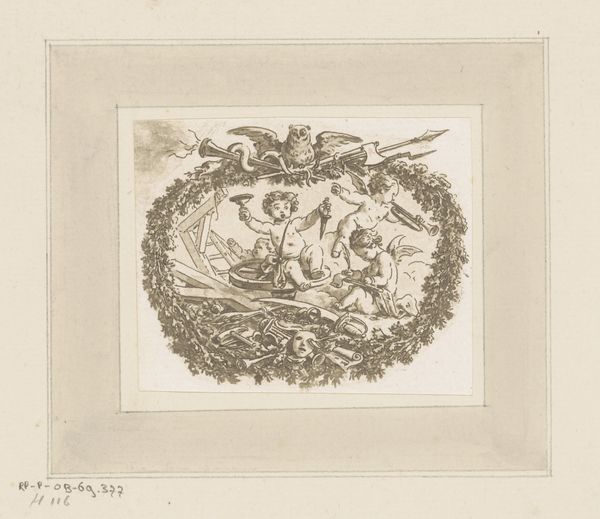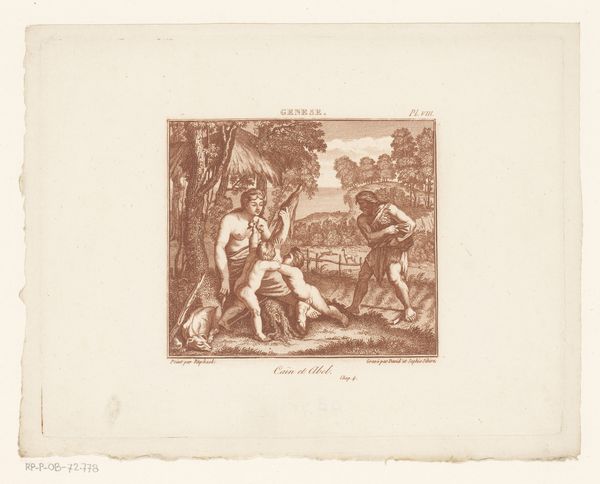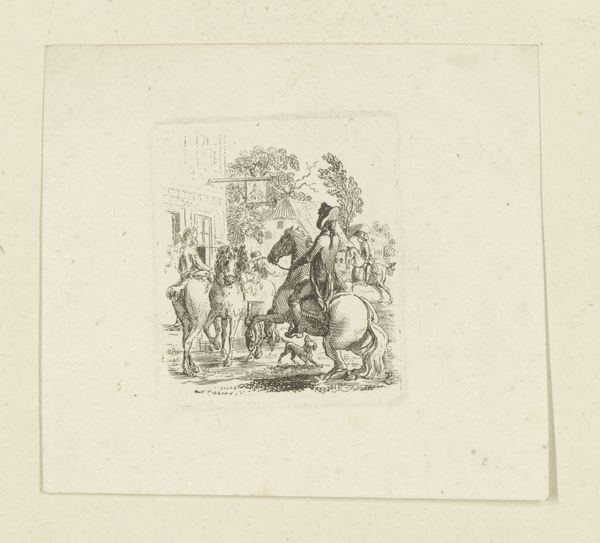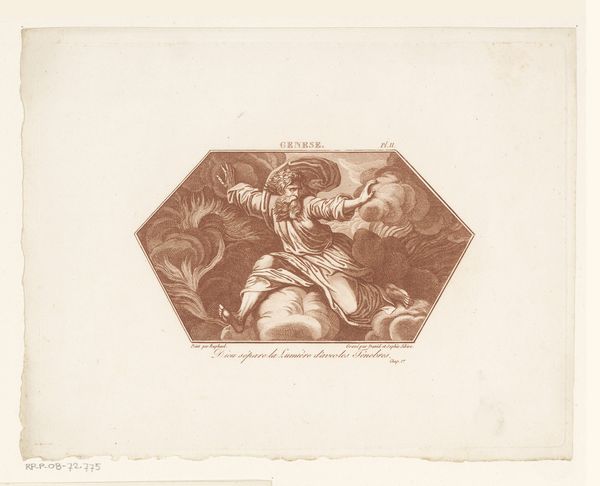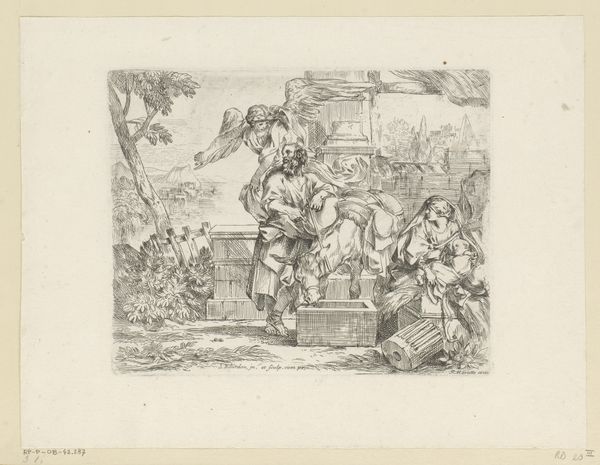
engraving
#
allegory
#
baroque
#
figuration
#
history-painting
#
engraving
Dimensions: height 67 mm, width 137 mm
Copyright: Rijks Museum: Open Domain
Curator: This engraving by Pierre Soubeyran, dating to 1745, presents an allegorical scene. Editor: It’s immediately striking – all that fine, precise line work. It gives the whole image a crisp, almost ethereal quality. And there’s such a focus on texture, from the floral border to the creature's fur. Curator: Precisely! It encapsulates Baroque sensibilities, a period defined by opulence and dynamic expression. What we see here is an allegorical representation involving a woman—perhaps representing abundance— surrounded by putti, a unicorn, and a lamb. Typical symbolic figures for this era. Editor: Yes, and considering this is an engraving, a medium that relies so heavily on the craftsman’s skill, I’m interested in the means of production. How were these lines physically created? What tools were used? The quality suggests high craftsmanship for consumption by a relatively affluent audience. Curator: Context is everything. These allegorical scenes were popular for conveying complex ideas in visual form. Think about the sociopolitical role – engravings allowed for wide distribution, making knowledge and narratives accessible across society. This specific image plays into those symbolic narratives favored by the elite. Editor: True, but let's think about materiality beyond the symbols. The paper, the ink, the physical act of pressing. Each contributes to the meaning, especially within a society where handcrafted items were valued for their labour and material cost. What paper would Soubeyran have used and who controlled the commerce in the material. Curator: Absolutely. What stands out to me is how the artist utilized allegory as a powerful tool. He engaged with the artifice of image-making, where visual language held a potent role. It's fascinating how political and philosophical notions filter through this cultural lens. Editor: Well said. I see the lasting value is this print lies not only in what it represents but also in what it is, an object born from specific labour processes, reflecting specific socio-economic conditions. Curator: A beautiful insight—we are seeing the layering of symbolic languages as cultural capital in a global network, right down to its material origins. Editor: Indeed!
Comments
No comments
Be the first to comment and join the conversation on the ultimate creative platform.

